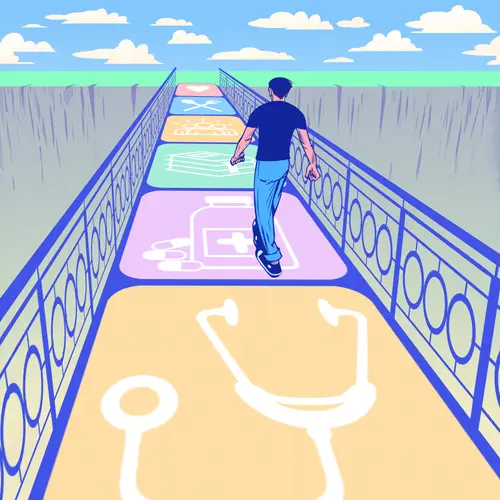Even when you exercise extra hard for “six-pack” abs, you might not get the results you want. That’s because it’s hard to lose abdominal fat, especially if you’re not exercising correctly.
Make sure you’re following these 7 training to-dos.
1. Go Beyond Crunches and Sit-Ups
There's a good reason these exercises are a go-to for abdominal training -- they work!
But your muscles adapt quickly to certain exercises. If this happens, they may stop responding altogether.
Changing your workout every 4-6 weeks will ensure the results keep coming.
It’s also important to do a variety of movements to fully target all of the ab muscles, not just the “six-pack” -- aka the rectus abdominis. Other muscles include the external and internal obliques, which are located on the side of the trunk. Try side bridges, planks, hip-ups, bicycles, and Pilates for variety. You can also incorporate stability devices, and do crunches on a Swiss ball for an advanced move.
2. Give Your Abs a Break
When it comes to training your abs, the more you do does not mean the more results you’ll get. As a matter of fact, doing too much can actually increase the risk of injury to the lower back.
If you’re working your midsection on a daily basis, you’re probably overdoing it. Like all other muscles in your body, your abs need rest to fully recover and repair from a strenuous workout. A good abdominal workout should only be performed on 2 to 3 nonconsecutive days per week.
3. Include Cardio
The biggest mistake men make when attempting to lose belly fat? Avoiding cardiovascular exercise. No matter how hard you try, you can’t spot-reduce. You must burn stored calories.
If a layer of fat is covering your abs, there isn’t any ab-specific workout that will show results without help from cardio training.
Strive for at least 30 minutes 5 days a week. But an even better way to torch belly fat is with vigorous exercise like jogging or an indoor-cycling class. And it’s a great time-saver too, giving you the same benefits in just 25 minutes 3 days a week.
To trim the layer of fat over your abs even faster, throw in high-intensity intervals.
4. Practice Resistance Training
Remember to train your other muscle groups, which are just as important for strengthening your abs.
Your midsection includes parts of muscles from other parts of your body. Tendons from other muscle groups (such as the latissimus dorsi and trapezius in the back and the hamstrings in legs) extend into and across the trunk area. The rectus abdominis is one long muscle rather than six individual muscles. What gives it the “six-pack” appearance are tendons that extend from other muscle groups and intertwine in this area.
The muscles surrounding your waist help to stabilize your body. Anytime you exercise with weights, your abdomen must activate to stabilize the body.
Total-body resistance training workouts will burn more calories than ab-only exercises. Weight training can burn about 6 to 10 calories for every minute you exercise, helping to burn fat that is stored around your waist. Alternate muscle groups with little to no rest in between (for example, do dumbbell bench presses followed by dumbbell squats) to burn maximum calories.
5. Eat Right
It's very difficult to burn the amount of calories you get from a triple cheeseburger and fries (more than 1,000). Exercise will greatly improve your overall health; but if you want to lose belly fat, you’re fighting an uphill battle if you don’t eat the right types of foods.
One pound of fat contains about 3,500 calories. So, if you want to lose 1 pound of fat per week, then you must burn or eliminate 500 calories each day.
For example, if you replace a 20-ounce bottle of regular soda with water (saving 250 calories) and walk 2 to 3 miles (burning about 250 calories) every day, then you could lose 1 pound of fat per week.
For advice on eating healthy, ask your doctor to refer you to a registered dietitian. A certified personal trainer can also help.
6. Create a Balanced Routine
Keep in mind, too, that relying on diet alone is a recipe for disappointing results. Although you can lose a significant amount of weight just by changing what you eat, a large portion of what you lose may be lean muscle and not fat.
But when you combine exercise with a healthy diet, you burn additional stored calories, ensuring that the weight you lose will come primarily from fat. Additionally, precious lean muscle will be enhanced.
7. Seek Help
If you feel that you’ve tried everything but still don’t see the results you’re after, you may want to consider getting advice from a certified personal trainer who is skilled in helping people achieve their fitness goals.
Choose a trainer who has a degree in exercise science or kinesiology and is certified by a respected organization such as the American Council on Exercise (ACE) or the National Strength and Conditioning Association (NSCA).
A trainer can also help you prevent injury and identify any health issues you may have that could stand in the way of your success. And if you’re new to exercise and over age 45, check with your doctor before jumping in abs first.

